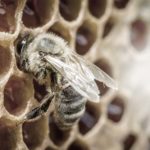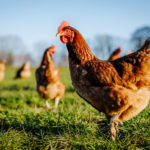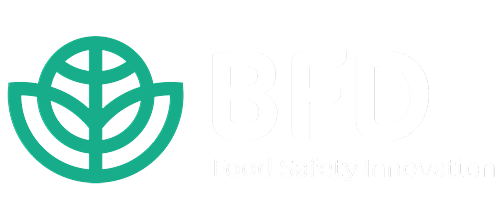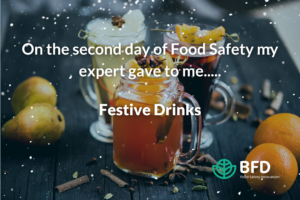
Fish Dishes: Day 4 – 12 Days of Food Safety
Day 4: Fish dishes
12 Day of Food Safety
Fish dishes are popular choices for Festive meals, especially in cultures where seafood is a significant part of the holiday tradition. Below is a list of diverse fish dishes that may be served over this special period.
- Ceviche: In some Latin American cultures, ceviche—a dish of raw fish or seafood marinated in citrus juice, often with onions, cilantro, and chili peppers—is enjoyed during festive occasions.
- Smoked Salmon: Smoked salmon is a classic choice for festive occasions. It can be served as an appetizer on blinis or toast points, or incorporated into various dishes like smoked salmon pasta or salads.
- Bouillabaisse: Bouillabaisse is a traditional fisherman’s stew originating from the Provence region in France. It typically includes a variety of fish, shellfish, and aromatic herbs in a broth.
- Oysters Rockefeller: Oysters Rockefeller is a dish where oysters are topped with a mixture of herbs, breadcrumbs, and butter, then baked or broiled. It’s a decadent choice for seafood lovers.
- Salted Cod (Bacalhau): Bacalhau is a traditional Portuguese dish featuring salted cod. It is prepared in various ways, such as Bacalhau à Brás (shredded cod with onions and potatoes) or Bacalhau à Gomes de Sá (cod with onions, potatoes, and eggs).
The Seafood Industry
Seafood has long been an important part of human diets, and increasingly a major source of economic value. The global seafood market reached a value of over 257 billion U.S. dollars in 2022, and is projected to reach approx. 350 billion dollars by 2027 1. This is the result of a significant amount of international trade between countries to meet customer demands. With logistical and technological innovations fostering economic interdependence, producers have been able to increase their access to distant markets, while consumers have seen their aquatic food options greatly diversified beyond the species caught or farmed in their local waters 2.
The countries listed below are some of the main players when it comes to exporting and importing large amounts of marine food products. These include fish, crustaceans, molluscs, and others which can be fresh, frozen, smoked, dried, and pickled, and those sourced from both aquaculture (fish farms) and wild-caught fish from both fresh and oceanic waters 3.
Exporters:
- China: China has been a major exporter of fish and seafood products. Its exports include a wide variety of fish and shellfish, both fresh and processed 3.
- Norway: Norway is a significant exporter of high-quality fish, particularly salmon. Norwegian salmon is well-regarded in international markets 3.
- Vietnam: Vietnam has emerged as a major exporter of fish and seafood products, including shrimp, catfish, and various value-added products 3.
- Thailand: Thailand is a major exporter of processed seafood products, including shrimp, canned tuna, and frozen seafood 3.
- India: India is a significant exporter of shrimp, fish fillets, and other seafood products 3.
Importers:
- United States: The U.S. is one of the largest importers of fish and seafood products, with a diverse range of imports, including shrimp, tuna, salmon, and other varieties 3.
- European Union: As a bloc, the EU is a major importer of fish and seafood. Countries like Spain, France, and the United Kingdom are significant consumers 3.
- Japan: Japan is a major importer of seafood, including high-quality fish for sushi and sashimi 3.
- China: While China is a major exporter, it is also a significant importer of fish and seafood products to meet domestic demand 3.
- Russia: Russia is a notable importer of fish, particularly in response to domestic demand for various fish products 3.
Antibiotics in Seafood
89% of the overall production of aquatic animals are used for human consumption. It is therefore essential that these products are rigorously monitored and tested throughout the supply chain to prevent the use of unauthorised or illegal antibiotics in aquaculture 4.
It is widely known that Antibiotic residues in seafood can pose serious health risks to consumers. The consumption of seafood containing antibiotic residues may contribute to the development of antibiotic resistance in bacteria that can affect human health. Antibiotic use in aquaculture can also have environmental consequences, such as the development of antibiotic-resistant strains in aquatic ecosystems. Testing at entry ports is a fundamental component for importing countries, it helps to ensure food safety, protecting public health, and maintains the integrity of international trade in the seafood industry 4.
Many countries have strict regulations and maximum residue limits (MRLs) for antibiotics in seafood. Testing ensures that imported seafood complies with these regulations and standards whilst also building consumer confidence by ensuring that the seafood available on the market is safe for consumption. Non-compliance can result in the rejection of the seafood shipment, regulatory actions and may damage the reputation of the exporting country’s seafood industry 4.
Many countries have platforms that allow for the exchange of information about food and feed safety issues. The Rapid Alert System for Food and Feed (RASFF) is a system operated by the European Union (EU) that notify others about food or feed products that have been tested at port and found to pose a risk. There have been several violations posted on the portal relating to antibiotics found in food, namely Nitrofurans found in Shrimps from India 4.
BFD Seafood Testing Panel
Biorex Food Diagnostics offer high quality immunoassay-based tests designed to detect antibiotics in Seafood.
All of our kits guarantee exceptional precision and reliable results, coupled with swift assay times. Our Nitrofuran kits boast the quickest sample derivatization on the market, taking just 30 minutes, whilst still offering impressively low limits of detection
With our readily available liquid reagents, breakable well plates, and single preparation for AOZ, AMOZ, AHD, and SEM, these kits not only deliver accurate results but also streamline the testing process for the end user.
| Description | Cat. No. | Assay Time | Specificity | Kit Size | Sample Types | Limit of
Detection |
| AOZ FAST | BXEFB41A | 45 Mins | 2.NP.AOZ 100% | 96T | Fish/Shrimp | 0.06ppb |
| AMOZ FAST | BXEFB42A | 45 Mins | 2.NP.AOZ 100% | 96T | Fish/Shrimp | 0.08ppb |
| AHD FAST | BXEFB43A | 45 Mins | 2.NP.AHD 100% | 96T | Fish/Shrimp | 0.08ppb |
| SEM FAST | BXEFB44A | 45 Mins | 2.NP.SEM 100% | 96T | Fish/Shrimp | 0.15ppb |
| Nifursol | BXEFB54A | 45 Mins | 2.NP.DNSH 100% | 96T | Shrimp | 0.25ppb |
| Chloramphenicol FAST | BXEFB03A | 45 Mins | Chloramphenicol 100%;
Chloramphenicol Glucuronide >100% |
96T | Shrimp/Prawn | 0.025ppb |
| Multi-Sulfonamide
(11 targets) |
BXEFT08A | 75 Mins | Sulfamethazine 100%; Sulfamethizole >100%
Sulfaquinoxaline >100%; Sulfadiazine >100% Sulfamerazine >100%; Sulfamonomethoxine >100%; Sulfapyridazine >100% Sulfathiazole >100%; Sulfamethoxazole 92% Sulfisoxazole 55%; Sulfapyridine 34% Sulfadoxine 24% |
96T | Muscle/Seafood | 10ppb |
Have you missed the previous 12 Days of Food Safety? Not to worry. Click the image below to check it out.
References
- Statista. Global seafood market value 2022-2027. https://www.statista.com/statistics/821023/global-seafood-market-value/ (accessed 27 November 2023).
2. Food and Agriculture Organization of the United Nations. TRADE OF FISHERIES AND AQUACULTURE PRODUCTS. https://www.fao.org/3/cc0461en/online/sofia/2022/trade-of-aquatic-products.html (accessed 27 November 2023).
3. Sen Nag O. Top Fish And Seafood Exporting Countries. https://www.worldatlas.com/articles/top-fish-and-seafood-exporting-countries.html (accessed 27 November 2023).
4. Seafish. Seafish Insight: Fishmeal production and trends. https://www.seafish.org/document/?ufprt=90C971CE11835E1CC6405BDDE707F2B3CC5BAAD8D7823C3535CCE131B05B4C25C733109701C90303F165A086EB58EAC450EBD7955353EA79AE1B549607DE9906F2A7C6A18EEBE2012FDBDFC8CDD782B48CBE44E8B920E901AA3486836F6EECE5371EE704115928A73EA0E9E60364219740195960D065789B28B7DDA935E35E546F1AB6BA52148FA49AD7B55AE1DBD65A8C2A8B8D107D9F88C48EC1B8DD100AA432AC174A0186FDB08E96A925AAE8DB7FBAA3DB5BE6AA3551EF037570D0E118344A22723E78502D14D146EF93CF8F511EBCBAAB8F6BFBE96499924512943C3497F5710930C80D8039A204F8D8709E9DDE2EC243A961F582EBB8E4E830258AFF8DAD3CB3EC1D174627603FDFA51631E2A1BEC41F21250C996E03BB4B7F5AD602AEBD11D09E9AF406A56375CABA7E06B979A58A6065D64BD298B9D86570B9DC5D6939FAF04D7D9AFFDD30DAC094A39B6D5DC2C1BE9B3B69CB761A444B0BEA13FE5900D33CA695DF61032F4448449A0B6FA0#:~:text=Of%20the%20overall%20production%20of,of%2020.2%20kg%20per%20capita. (accessed 27 November 2023).










